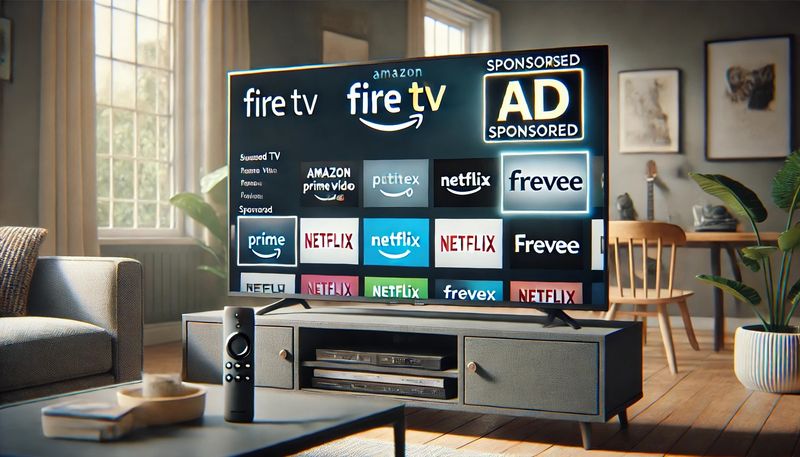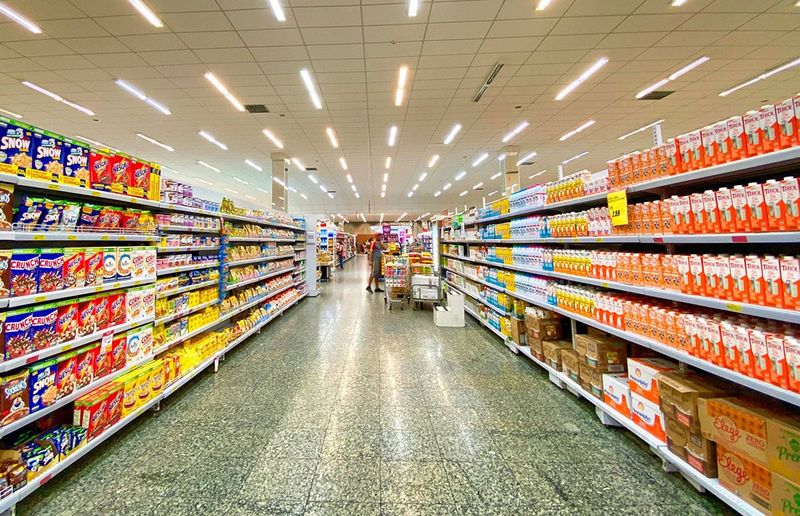Through Amazon Sponsored Products or Amazon Sponsored Brands advertisers can target potential customers on the Amazon platform. But besides Amazon, there are many other websites on the Internet where you can address potential customers. To enable advertisers to reach these target groups outside Amazon's platform, Amazon offers sellers and vendors an Amazon DSP solution.
- Definition of terms and one example
- Differences between Amazon Advertising and Amazon DSP
- Advertising material from Amazon DSP
- Amazon DSP Reporting API
- Conclusion
Definition of terms and one example
DSP is a term from online advertising and stands for Demand Side Platform. This technology enables advertisers to place targeted bids for advertising space on other websites. Thus, with the help of the Amazon DSP software, you can address Amazon customers on other websites.
Here is a short example:
- You as an Amazon Seller or Amazon Vendor have run a campaign via Amazon DSP, which is intended to address people interested in washing machines.
- A person visits the website spiegel.de, which displays ads from third parties such as Amazon. The website owner offers the advertising space for auction to various advertisers (including Amazon).
- Amazon's DSP software recognizes that visitors have recently become more interested in washing machines but have not yet purchased one. Amazon, therefore, bids according to your settings in this auction. This also applies to other advertisers, if applicable.
- If you were the highest bidder, you would be awarded the ad impression.
- Then you will show the person your ad about washing machines on the website.
- In the best case, the person clicks on your ad and ends up on the Amazon product detail page of your advertised product.
Amazon DSP is not only available to sellers and vendors. Companies that are not active as sellers or vendors on the Amazon marketplace can also use Amazon DSP for themselves.
Differences between Amazon Advertising and Amazon DSP
Any DSP user can place advertising outside of Amazon is one of the most significant differences to "classic" Amazon advertising (Amazon Advertising). Compared to Sponsored Ads, DSP has a much broader reach. The following table shows further distinguishing features between Amazon Advertising and Amazon DSP.
| Amazon Advertising | Amazon DSP | |
|---|---|---|
| Billing | CPC (cost per click) | CPM (cost per impression) |
| Minimum budget | none | ca. 10,000 EUR |
| Access | Self-Service | Managed-Service or Self-Service |
| Inventory | Within Amazon | Within and outside of Amazon |
| Targeting | Keyword- and product-based, limited target group-based | Target groups or retargeting |
Amazon Advertising
- Billing: CPC (cost per click)
- Minimum budget: none
- Access: Self-Service
- Inventory: Within Amazon
- Targeting: Keyword- and product-based, limited target group-based
Amazon DSP
- Billing: CPM (cost per impression)
- Minimum budget: ca. 10,000 EUR
- Access: Managed Service or Self-Service
- Inventory: Inside and outside Amazon
- Targeting: target groups or retargeting
Billing
You only pay when a user clicks on your ad (CPC - Cost Per Click). With Amazon DSP, on the other hand, you pay when the ad is played and thus displayed. Therefore, this is called "impression-based billing" (CPM - Cost Per Mille).
Minimum budget at Amazon DSP and access to the campaigns
If you are using Amazon Advertising, you only can access the measures via the self-service procedure. This means that you monitor and control your Amazon Sponsored Products or Amazon Sponsored Brands completely by yourself, and no administration fees are incurred. In comparison, Amazon DSP offers the possibility to choose between the Self-Service or Managed Service procedure. You have full control over your campaign within the self-service procedure, and there are no administrative fees. However, if you want to use the Managed Service, this usually requires a minimum budget of approx. 10,000 EUR. This is because Amazon creates the ads for the advertiser (Managed Service), and a campaign manager is provided to you.
Amazon DSP Inventory
Especially the so-called "Inventory " of Amazon DSP is different from other advertising possibilities. The inventory describes all advertising spaces that can be sold to an advertiser. Thus, you not only can display your ads on Amazon but also get access to other platforms that display ads on your site. These third parties are referred to as "Publishers" connected to Amazon via so-called "Exchanges".
Thus, the Amazon DSP Inventory gives you access to a much larger target group since most potential customers are outside of Amazon's platform. As far as the advertisement itself is concerned, you can - as before - send the potential customers to a product detail page at Amazon or to a self-defined page that you own, e.g., your homepage.
Amazon DSP Targeting and Retargeting
Another difference is the selection of target groups. While Amazon Advertising only allows keyword, product, and limited target group targeting, Amazon DSP also offers the possibility of Retargeting and creating own target groups (Advertiser Audiences and Lookalike Audiences).
Retargeting
With retargeting, you can approach the following users again:
Site visitors who have already been to your homepage, Amazon users who are working with your products or brand or have interacted with third-party products (Remarketing Amazon User).
You must use an Amazon tracking pixel on your homepage to mark the page visitors to use retargeting.
Advertiser Audiences and Lookalike Audiences
An advertiser audience is a company-owned customer target group. You can create them by uploading your customer data. You can then use the Advertiser Audience to reach your users on the Amazon platform. In addition, Amazon compares this data with its own and tries to find matches. This allows you to create a so-called Lookalike Audience then. It is also called statistical twins because it is very similar to the target group you uploaded in its buying behavior. You can also create a Lookalike Audience by referring to the data of your tracking pixel built into the website.
Amazon Target Audience Targeting
By characteristics such as demographic data (age, sex), data to the terminal or place can be limited target groups on Amazon further. In this way, you can reach new consumers who are more likely to buy a particular product due to their user behavior.
The following targeting options are available:
- In-market: Customers who are interested in certain products and who are likely to buy them
- Lifestyle: Customers who can be assigned to specific segments based on their consumer behavior
- Context: Customers who are active in specific fields
- Demography: Customers with certain age or gender
- Location: Customers from a particular region
- Daytime: Campaigns are played at a particular time
- Technology: Customers using specific devices, browsers, operating systems, or screen sizes
All in all, the targeting options are pretty diverse, so you should pay close attention to which settings you choose. Because of the large inventory, there is the danger of "burning" much money if you hit the wrong or too rough settings. Therefore, you should intensively deal with which targeting options are best suited for your target group and to what extent. If you are unsure, especially initially, we recommend that you first carry out smaller tests with manageable budgets, observe the results and then scale the most promising option.
Advertising material from Amazon DSP
Amazon DSP offers advertisers different forms of advertising with varying design options so that customers can be addressed in a variety of ways. The other options are presented below.
Amazon DSP - Standard Display Ads
The first option for advertisers is to create standard display ads in different sizes. These, in turn, can consist of a static image or a flash animation. Advertisers can choose the formats according to the campaign objective.

Amazon DSP - Dynamic eCommerce Ads (DEAs)
Dynamic eCommerce Ads (DEAs) are a particular form of standard display ads. They are used for advertising individual products sold on Amazon. After clicking on the ad, the customer is redirected to the respective product detail page. Amazon optimizes its display form automatically and in real-time. In general, DEAs consist of two components: a static image and an e-commerce element (e.g., a To Offer button). DSP generates different display variants from the product image.
Amazon DSP - Video Ads
Amazon's demand-side platform gives advertisers a powerful advertising tool with video ads. Hardly any other medium can transport advertising and brand messages as effectively as a video clip.
DSP delivers the video ads in different forms:
- In-Stream Video Ads: They are integrated into already existing video content and appear, for example, before the actual video content.
- Out-Stream Video Ads: They stand alone and appear outside of video content.
- In-App Interstitial Video Ads: They are a particular form of Out-Stream Video Ads that appear in apps and hide the actual content. Users, therefore, quickly find them bothering. So far, You can only use them in the USA.
Amazon DSP Reporting API
To give advertisers a better overview of your campaign, the Amazon DSP Reporting API has been available in a beta version since May 2020. Advertisers, agencies, and tool providers can now use the Amazon Advertising API to retrieve reports for all their Amazon DSP campaigns. They can filter results by advertiser IDs and choose from over 400 available metrics.
This API functionality saves hours of manual report retrieval. You can also retrieve reports in the tools you use to manage other marketing channels more efficiently. This functionality is available to those who have self-service access to Amazon DSP. If you are interested in this API, please visit the Amazon Advertising API Website.
Conclusion
With Amazon DSP, you can generate attention for your brand and products. Furthermore, DSP provides granular targeting possibilities and a vast inventory to increase reach. In addition, consumers who have already done research on the products and are interested in them but have not yet become buyers can be reached. Nevertheless, you should have informed yourself in detail about Amazon's demand-side platform and know its possibilities before you invest much money in it.
Free trial
Just register for a 14-day free trial to use AMALYTIX and we'll show you how our Amazon Seller Tool and Amazon Vendor Tool an help you monitor your marketing activities on a daily basis. Start your free trial now





